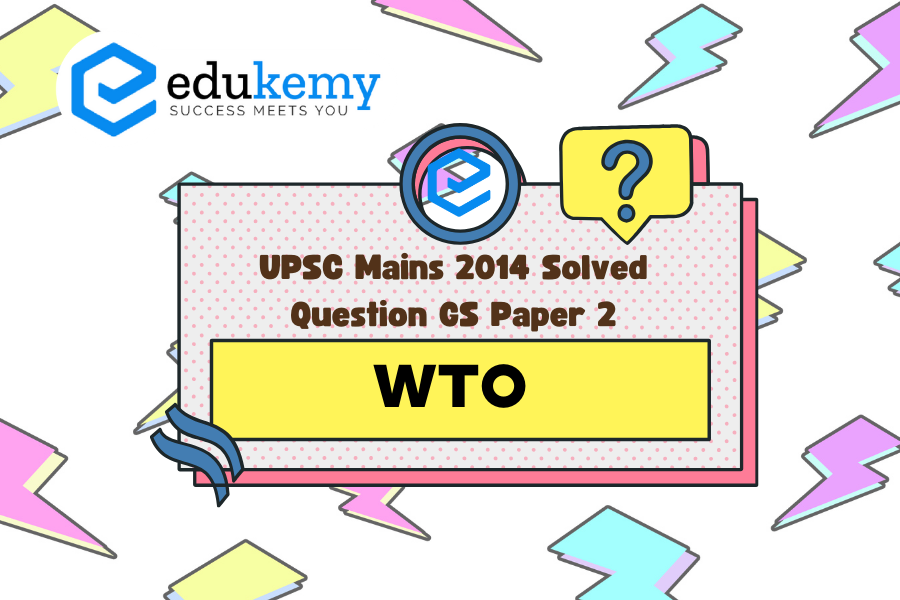The World Trade Organization (WTO) stands as a pivotal international institution, wielding significant influence over global trade policies and regulations. Established in 1995, its mandate encompasses the facilitation of international trade by establishing rules, resolving disputes, and negotiating agreements among member countries. The decisions made within the WTO hold considerable weight, as they can profoundly impact the economic well-being of nations across the globe. However, the binding nature of these decisions is subject to the consensus among member states, allowing for a degree of flexibility and negotiation.
India’s stance on the latest round of talks on food security within the WTO reflects its commitment to safeguarding the interests of developing nations. Particularly, India has advocated for measures that protect the food security programs crucial for its large population. These discussions have revolved around issues such as the amendment of WTO rules to accommodate developing countries’ food stockpiling programs without facing punitive measures for breaching subsidy limits. India’s stance underscores the importance of balancing trade liberalization objectives with the need to address the developmental needs and sovereign rights of member states, particularly those with significant agricultural sectors. The critical analysis of India’s position highlights the intricate interplay between trade liberalization and national development priorities within the WTO framework.
Tag: Important International institutions, agencies and fora – their structure, mandate.
Contents
Decoding the Question:
- In Introduction, try to brief about the background of WTO.
- In Body,
- Write the mandate of WTO and how binding its decisions are.
- Mention India’s stand on the latest round of talks on Food security.
- In Conclusion, try to suggest the way forward for India.
Answer:
World Trade Organization (WTO), international organization established to supervise and liberalize world trade. The WTO is the successor to the General Agreement on Tariffs and Trade (GATT), which was created in 1947. The WTO is run by its member governments. All major decisions are made by the membership, either by ministers (who meet at least once every two years) or by their ambassadors or delegates (who meet regularly in Geneva). Decisions are normally taken by consensus.

The mandate of WTO:
- Settlement: The WTO is responsible for overseeing the rules of international trade. It exchanges information/arguments and provides incentives for parties to come to a mutually agreed settlement.
- Rebalancing: If one party violates, another should not be obliged to continue to perform its obligation to ensure fairness and reciprocity.
- Compensation: It repairs the damage caused by the breach to victims of the beach.
- Compliance: It also facilitates trade negotiations among its 164 members, up from 123 in 1994, and brings about conformity with the rules.
- Clarification: It clarifies the rules to facilitate compliance or settlement in the specific case, as well as to guide future conduct.
- Deterrence/Punishment: The organization also monitors the implementation of trade agreements, produces research on global trade and economic policy, and serves as a forum for settling trade disputes between countries, which deter future violations of the law.
- In its two and a half decades, it has helped reduce barriers to trade of both goods and services and created a dispute resolution system that supporters say reduced the threat of trade wars.
How Binding are their Decisions?
- It is a legally binding treaty squarely within the wider corpus of international law. As compared to the original GATT, the WTO has legalized the rules as part of public international law.
- The WTO is run by its member governments. All major decisions are made by the membership, either by ministers (who meet at least once every two years) or by their ambassadors or delegates (who meet regularly in Geneva).
India’s Stand on the Latest Round of Talks on Food Security:
- At the WTO Ministerial Conference in Bali in 2013, India with other developing countries had succeeded in formulating an interim due restraint mechanism for their food security programmes not to be targeted by WTO dispute settlement cases initiated by developed countries.
- According to the WTO rule, public stockholdings must not exceed 10% of the value of foodgrains produced and calculated at the base price of 1986-88. You cannot calculate current food subsidy limits by 1986-88 prices. That beats all logic.
- For most of the developing countries (including India) public stockholding for food security is a livelihood issue and a matter which should not be even debated at WTO.
- India took a firm stand on not compromising its food security and advocate for setting up a work programme for finding a permanent solution on the food grain stockpile issue should be the prerequisite for approving the trade facilitation agreement (TFA).
- It also clarified, the interim Peace Clause will continue to be in place, which provides protection against the WTO farm caps until a permanent solution is found.
- India hardened its stance on agriculture subsidies and food security and did not support the trade facilitation agreement in its key forms.
- India’s hold on the implementation of the Trade Facilitation Agreement was an unfavorable outcome, but India needs to ensure its food security programs and the food grains procurement schemes.
India should continue with its stand at the WTO to demand a permanent solution to the issue of public stockholding before the protocol on trade facilitation is signed. It should also resist efforts to dismantle the existing in-kind PDS; on the contrary, it should make every effort to strengthen it.
In case you still have your doubts, contact us on 9811333901.
For UPSC Prelims Resources, Click here
For Daily Updates and Study Material:
Join our Telegram Channel – Edukemy for IAS
- 1. Learn through Videos – here
- 2. Be Exam Ready by Practicing Daily MCQs – here
- 3. Daily Newsletter – Get all your Current Affairs Covered – here
- 4. Mains Answer Writing Practice – here


